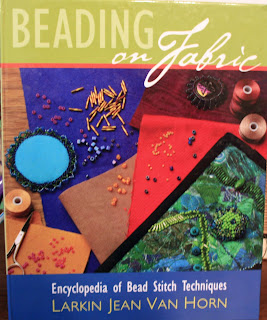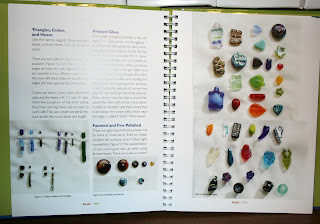 There's a new face in the studio. Meet Libby.... who sits on on the top shelf of Lilibet, my Louet Spring loom. This one was spotted when touring around town with my brother a few weeks ago. I resisted but she was still there when I went back. Must be fate! Connor our terrier thinks it's for him and he waits....and waits...
There's a new face in the studio. Meet Libby.... who sits on on the top shelf of Lilibet, my Louet Spring loom. This one was spotted when touring around town with my brother a few weeks ago. I resisted but she was still there when I went back. Must be fate! Connor our terrier thinks it's for him and he waits....and waits...I know of some fibre enthusiasts who madly collect all things sheepish: mugs, stuffed ones, pictures, ceramic ones.... heck even real ones! I selectively bring home cute sheep. They are restricted to my studio and are nestled onto shelves, among yarns or tucked near books. There is only so much room so they have to pass muster to be among the chosen few.
I recently got word that a former member of our local guild was selling off all her weaving equipment and books. The loom and yarns were long gone, but I have discovered that it was sold to a friend so I'll be seeing it sooner or later. What perked me up was the ball winder and swift for sale! I have those already but my daughter needs them. She has taken up knitting and doing great! If you have a Ravelry account, her user name is 'Gnomenapper' and take a look at her projects and her toe up socks. (I'm in awe of sock knitters). Below is her swift which needs to find a long skinny box to begin its long journey to North Carolina. The ball winder is mine and is a duplicate of her winder which is already on it's way.

I also got a 36" stainless steel 8 dent reed for my Spring. It nicely rounds out my selection now and I have an 8, 10, 12 and a 15.
 There were books of course!
There were books of course!This one of weaving around the world. The author's name is Anne Hecht and she did a nice job of recording the various methods in the major cultures world wide.
 There has been some interesting Shibori showing up at blogs lately and so I snapped this one up and hope to give this technique a try! ( Thanks for the nudge Ngaire!)
There has been some interesting Shibori showing up at blogs lately and so I snapped this one up and hope to give this technique a try! ( Thanks for the nudge Ngaire!) I arrived home with goodies in hand to find that some back ordered books had arrived from Amazon in the mail. To further pursue studies in colour theory, I now have Deb Menz's Colorworks to mull over. ( sorry the image is a bit fuzzy...the camera battery died and is on the recharger)
I arrived home with goodies in hand to find that some back ordered books had arrived from Amazon in the mail. To further pursue studies in colour theory, I now have Deb Menz's Colorworks to mull over. ( sorry the image is a bit fuzzy...the camera battery died and is on the recharger) The second title shows great promise! I have a major bead stash and would like to utilize my beads more and be creative with them. Maybe move on from just the 'fringe' of things!
The second title shows great promise! I have a major bead stash and would like to utilize my beads more and be creative with them. Maybe move on from just the 'fringe' of things! The author shows all the various securing techniques quite clearly and the book is a fun read and quite inspiring. This peek is a cross view of the various beads and ceramics and I have seen many at Beadworld. (though I plan to use what I got at home first.....honest!! :)
The author shows all the various securing techniques quite clearly and the book is a fun read and quite inspiring. This peek is a cross view of the various beads and ceramics and I have seen many at Beadworld. (though I plan to use what I got at home first.....honest!! :)
So I have walked by Lilibet, the current naked loom and it just doesn't seem right. I thought "I'll just wind a warp for some scarves. 196 ends didn't take long , so why don't I just quickly beam this 9 yard warp? " That went fast ! ( I love the new method a la Jane Stafford!)
 Once perched off the ground, I sit on a small stool and do the tie up in a much more comfortable position than cramped up on the floor. I have the spare treadles secured up with a single tie up cord. They are released once it's back down on the floor.
Once perched off the ground, I sit on a small stool and do the tie up in a much more comfortable position than cramped up on the floor. I have the spare treadles secured up with a single tie up cord. They are released once it's back down on the floor. So I did thread it... any bets on what happened next?
So I did thread it... any bets on what happened next?











 At the very most, I *might* have to tighten the edge groups just a touch and that's all! Next I wound 4 red threads, divided between two film canisters, and the third is the floating selvedge. There is another on the other side of the warp. With twill patterns, the weft or filler yarn may not be caught at the edge every time and can produce a messy edge. Having an extra thread passing from front of the loom, through the reed, to back, but not threaded through a heddle, helps to keep things neat and tidy. The shuttle enters the shed (or opening when the treadles are depressed) over the floating thread and come out under the thread on the opposite side. It take just a short time to get used to and then becomes routine. {For weavers who do not want to use a floating selvedge, there is a method of where to start your shuttle to avoid this. We'll talk about this another time.}
At the very most, I *might* have to tighten the edge groups just a touch and that's all! Next I wound 4 red threads, divided between two film canisters, and the third is the floating selvedge. There is another on the other side of the warp. With twill patterns, the weft or filler yarn may not be caught at the edge every time and can produce a messy edge. Having an extra thread passing from front of the loom, through the reed, to back, but not threaded through a heddle, helps to keep things neat and tidy. The shuttle enters the shed (or opening when the treadles are depressed) over the floating thread and come out under the thread on the opposite side. It take just a short time to get used to and then becomes routine. {For weavers who do not want to use a floating selvedge, there is a method of where to start your shuttle to avoid this. We'll talk about this another time.}





 Those four red warp ends didn't appear anywhere else as an 'oops'. (phew!) I wove the border repeats and then I have hemstitched every 4 ends across the warp. But I didn't use the 2/8 tencel. It's a bit on the thick side and so will produce a thicker hemstitch line, which I really don't care for. The purpose here is this case is to secure the ends from moving and destabilizing the cloth, not be a feature. With some projects, fancy needle treatments such as trellis hemstitching, for example, are lovely. That would be lost with the size of the shawl and the patterning in this case. The picture below shows me laying in the finer silk thread. The silk has more 'bite' to it and stays snugly wrapped.
Those four red warp ends didn't appear anywhere else as an 'oops'. (phew!) I wove the border repeats and then I have hemstitched every 4 ends across the warp. But I didn't use the 2/8 tencel. It's a bit on the thick side and so will produce a thicker hemstitch line, which I really don't care for. The purpose here is this case is to secure the ends from moving and destabilizing the cloth, not be a feature. With some projects, fancy needle treatments such as trellis hemstitching, for example, are lovely. That would be lost with the size of the shawl and the patterning in this case. The picture below shows me laying in the finer silk thread. The silk has more 'bite' to it and stays snugly wrapped.

 After weaving the border, and a couple of repeats I paused to look things over..... and, ta da! here it is:
After weaving the border, and a couple of repeats I paused to look things over..... and, ta da! here it is: 



















